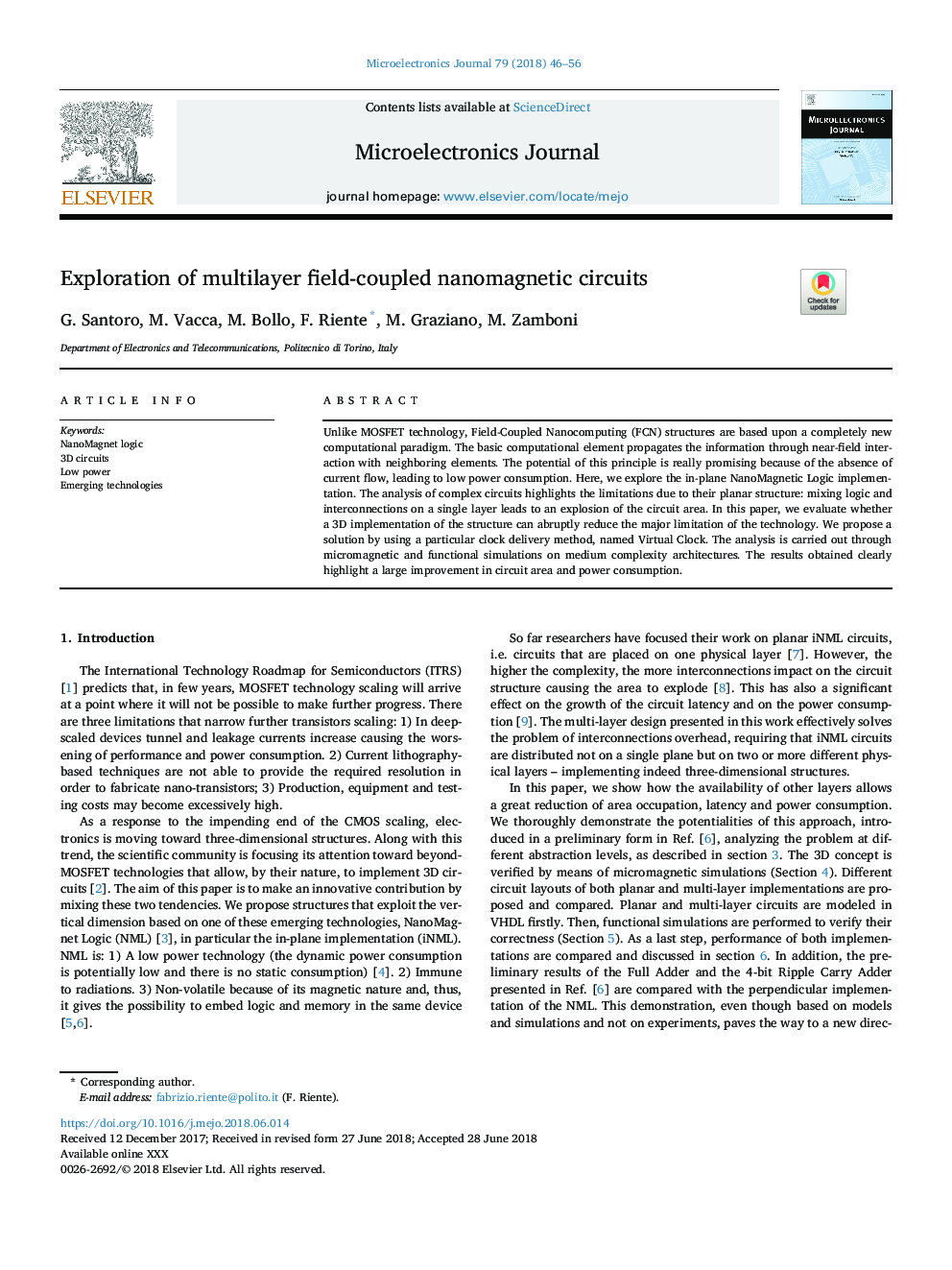| Article ID | Journal | Published Year | Pages | File Type |
|---|---|---|---|---|
| 6944821 | Microelectronics Journal | 2018 | 11 Pages |
Abstract
Unlike MOSFET technology, Field-Coupled Nanocomputing (FCN) structures are based upon a completely new computational paradigm. The basic computational element propagates the information through near-field interaction with neighboring elements. The potential of this principle is really promising because of the absence of current flow, leading to low power consumption. Here, we explore the in-plane NanoMagnetic Logic implementation. The analysis of complex circuits highlights the limitations due to their planar structure: mixing logic and interconnections on a single layer leads to an explosion of the circuit area. In this paper, we evaluate whether a 3D implementation of the structure can abruptly reduce the major limitation of the technology. We propose a solution by using a particular clock delivery method, named Virtual Clock. The analysis is carried out through micromagnetic and functional simulations on medium complexity architectures. The results obtained clearly highlight a large improvement in circuit area and power consumption.
Keywords
Related Topics
Physical Sciences and Engineering
Computer Science
Hardware and Architecture
Authors
G. Santoro, M. Vacca, M. Bollo, F. Riente, M. Graziano, M. Zamboni,
